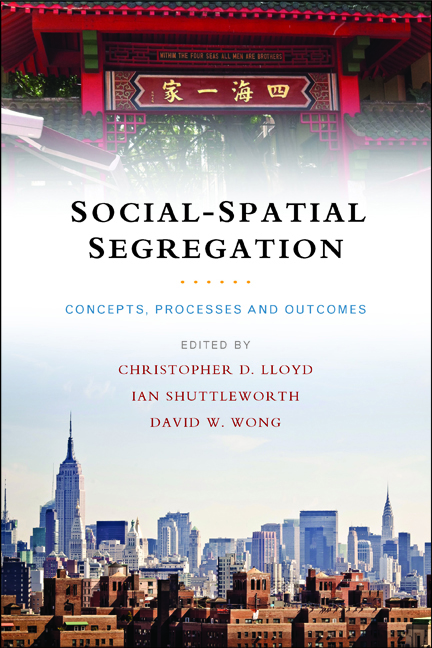thirteen - A tale of two cities: residential segregation in St Louis and Cincinnati
Published online by Cambridge University Press: 04 March 2022
Summary
Introduction
Some forms of residential segregation (for example, concentrated poverty) can have negative consequences for social mobility (see Chapters Eleven, Twelve and Fifteen, this volume). They are shown to be associated with, for instance, the achievement gap in education (Vartanian and Gleason, 1999; Card and Rothstein, 2006) and health disparities (Williams and Collins, 2001; Kramer and Hogue, 2009; see also Chapter Fourteen, this volume). Research shows that living in a deprived neighbourhood can have lasting impacts on life chances (Wilson, 1990; see also Chapter Sixteen, this volume). In the US, high school dropout rates are significantly higher in minority neighbourhoods (Orfield et al, 2004). If dropout rates were cut in half, US$45 billion could be saved annually through a decrease in social services and incarceration and an increase in revenue (Bridgeland, 2011). Studies show that 75 per cent of North America's state prison inmates are high school dropouts (Harlow, 2003), and an increasing participation rate of minority students in college to a level the same as that of White students would create at least US$80 billion in new tax revenues (Alliance for Excellent Education, 2003).
In the wake of rising costs of residential segregation, it is important to formulate urban policies that effectively redress the negative effects of segregation. One cannot devise such policies without a good understanding of what causes residential segregation. Yet, processes leading to residential segregation are highly context-dependent. Segregation levels are higher in certain North American cities as compared to other Western cities (Fong, 1996; Musterd, 2005; Johnston et al, 2007). Spatial outcomes of social polarisation vary by cities (Sassen, 1991; Hamnett, 2001; Poulsen et al, 2002; Maloutas, 2007). External forces (for example, demographic changes) interact with various characteristics of a neighbourhood differently (Megbolugbe et al, 1996). Understanding place-specific processes of residential segregation can also help devise effective ‘place-based policies’ that consider local characteristics (White House, 2009).
What are the place-specific processes or characteristics that contribute to residential segregation with negative social capital effects? This chapter explores if the structure of the housing market can be one of these place-specific characteristics. In addition, this chapter proposes some methods to answer this question while comparing residential segregation in St Louis and Cincinnati.
- Type
- Chapter
- Information
- Social-Spatial SegregationConcepts, Processes and Outcomes, pp. 301 - 332Publisher: Bristol University PressPrint publication year: 2014
- 1
- Cited by



